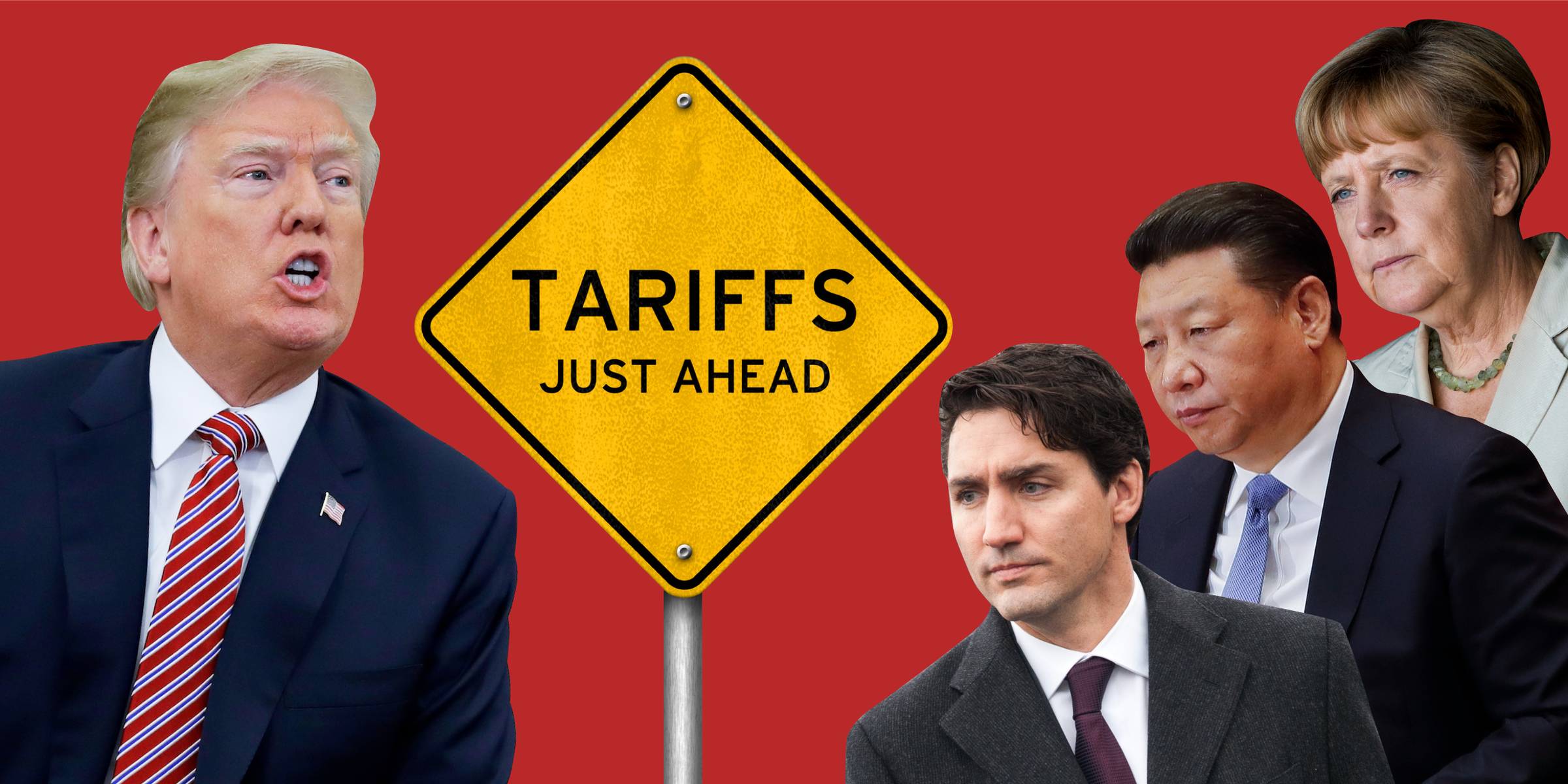The Potential Return Of Trump Tariffs: Implications For European Businesses

Table of Contents
1. Historical Context: The Trump Tariffs and their Impact on Europe
The Trump administration's imposition of tariffs on European goods, particularly steel, aluminum, and automobiles, significantly impacted transatlantic trade. These protectionist measures, ostensibly aimed at protecting American industries, led to a tit-for-tat escalation, with the EU retaliating with its own tariffs. The consequences were far-reaching.
- Specific tariff rates imposed on key European exports: Tariffs on steel and aluminum reached 25%, while tariffs on automobiles reached as high as 20%, significantly increasing the cost of European goods in the US market.
- Examples of retaliatory tariffs imposed by the EU: The EU responded with tariffs on a range of American goods, including agricultural products and motorcycles, impacting both businesses and consumers on both sides of the Atlantic.
- Economic data illustrating the negative consequences: Studies showed significant job losses in affected European industries, reduced exports to the US, and increased prices for consumers. Specific industries like automotive manufacturing in Germany and agricultural sectors in France suffered considerably.
2. Potential Triggers for a Return of Trump Tariffs
Several scenarios could trigger a renewed wave of Trump-style tariffs. A shift in US administration, particularly a return to protectionist policies, could easily reignite trade disputes. Furthermore, escalating trade tensions with China or other global powers could provide a pretext for renewed protectionism. Domestic lobbying by US industries seeking protection from foreign competition could also influence policy decisions.
- Possible political events that could trigger tariff increases: A change in US presidential administration, heightened trade tensions with key trading partners, or a significant shift in US economic policy could all potentially lead to renewed tariffs.
- Economic indicators that might influence trade policy decisions: A significant decline in a specific US industry's competitiveness, a large trade deficit with the EU, or a perceived national security threat could be cited to justify new tariffs.
- Key players (political figures, industry lobbies) who could advocate for tariffs: Powerful US industry lobbies, particularly in steel, aluminum, and automotive manufacturing, could exert significant pressure on policymakers to reinstate or increase tariffs.
3. Sector-Specific Impacts: Assessing Vulnerability Across Industries
The potential impact of a resurgence of Trump tariffs varies significantly across European sectors. The automotive industry, with its substantial exports to the US, remains particularly vulnerable. Similarly, agricultural sectors exporting products such as cheese and wine could face significant challenges. Manufacturing sectors reliant on US markets for key components or finished goods are also at risk.
- Analysis of the tariff sensitivity of different European industries: Industries with high export concentrations in the US market, those with limited alternative export destinations, and those facing strong domestic competition are the most vulnerable.
- Examples of businesses particularly vulnerable to tariff increases: Large automotive manufacturers, specialized agricultural producers, and smaller businesses heavily reliant on US markets are particularly at risk.
- Potential strategies for reducing vulnerability (e.g., diversification, relocation): European businesses could mitigate risks through diversification of supply chains, exploring new markets, investing in automation and technology to increase efficiency, and potentially relocating production facilities.
4. Strategic Responses: How European Businesses Can Prepare
Proactive planning is crucial for European businesses to navigate the uncertainties of US trade policy. This includes developing robust contingency plans, diversifying supply chains to reduce reliance on the US market, engaging in proactive lobbying efforts at both national and EU levels, and investing in research and development to increase competitiveness.
- Specific steps businesses can take to mitigate tariff risks: Conduct thorough scenario planning, diversify export markets, enhance operational efficiency, and strengthen relationships with key stakeholders.
- Examples of successful adaptation strategies by European companies: Companies that successfully navigated previous trade disputes often diversified their supply chains, invested in automation, and developed new product lines less susceptible to tariffs.
- Resources available to help businesses navigate trade policy changes: Government agencies, industry associations, and specialized consultants can provide valuable support and guidance.
5. Conclusion: Navigating the Uncertainties of US Trade Policy
The potential return of Trump-style tariffs presents significant challenges for European businesses. Understanding the potential triggers, assessing sector-specific vulnerabilities, and implementing proactive strategies are paramount. A return to protectionist measures could disrupt supply chains, stifle economic growth, and reignite trade tensions. European businesses must remain vigilant, actively monitor developments in US trade policy, and develop robust contingency plans to mitigate the risks associated with a potential resurgence of tariffs. Research relevant resources, engage with industry associations, and develop comprehensive contingency plans to navigate the uncertainties of US trade policy and protect your business from the potential impact of Trump-era tariffs or a resurgence of similar protectionist measures.

Featured Posts
-
 Angela Swartz Key Accomplishments And Projects
May 13, 2025
Angela Swartz Key Accomplishments And Projects
May 13, 2025 -
 Aryan Sabalenka Wins Italian Open Match Advances To Round Of 32
May 13, 2025
Aryan Sabalenka Wins Italian Open Match Advances To Round Of 32
May 13, 2025 -
 Myanmar Examining The Uk And Australias Differing Approaches To Sanctions
May 13, 2025
Myanmar Examining The Uk And Australias Differing Approaches To Sanctions
May 13, 2025 -
 Severe Heat Wave Shuts Down Schools In Metro Manila
May 13, 2025
Severe Heat Wave Shuts Down Schools In Metro Manila
May 13, 2025 -
 Landman Season 2 Casting Update Addresses Demi Moore Concerns
May 13, 2025
Landman Season 2 Casting Update Addresses Demi Moore Concerns
May 13, 2025
